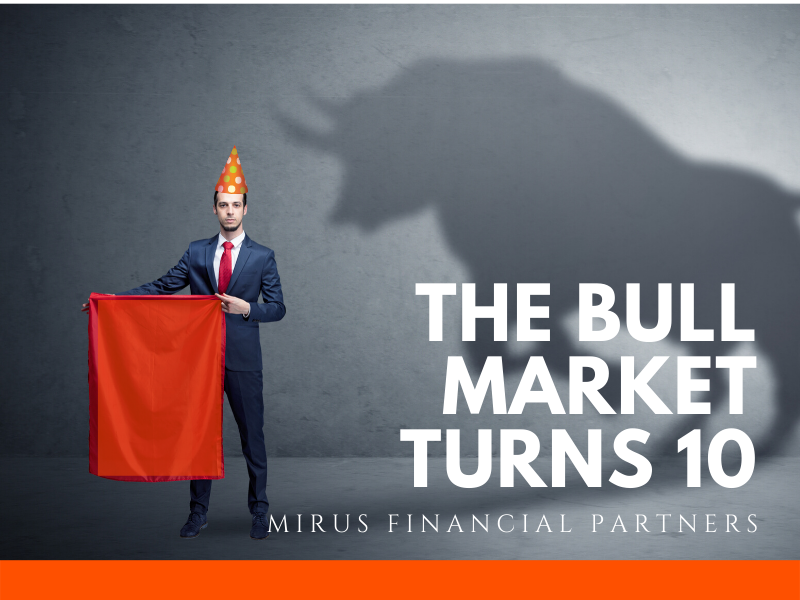The Bull Market Turned 10 in March
Submitted by MIRUS Financial Partners on March 23rd, 2019
March 9, 2019, marked the 10th anniversary of the S&P 500’s longest ever bull market run. Why is this bull market having such a long run?
An Overview of the Market in the 2000s
As many of us now know, low interest rates and low lending standards resulted in a bit of a house of cards in the lending market back in the early 2000s. Banks sold risky loans to Freddie Mac and Fannie Mae, which are government-sponsored enterprises (GSE’s) that guarantee the loans. Without going too deeply into banking processes, loans were resold repeatedly and bundled into mortgage-backed securities (MBS.) These bundles were then sold to all types of investing entities. When high numbers of people started defaulting on loans, the resulting liquidity issues led to a string of bankruptcies, foreclosures, and business failures.
Efforts Made to Stabilize the Economy
With so many elements contributing to a falling market and the destabilization of the economy, the U.S. Government took a series of unprecedented actions in the fourth quarter of 2008, which included:
- The Government took control of Freddie Mac and Fannie Mae.
- The Government passed the Troubled Asset Relief Program (TARP) which allowed the Treasury to purchase up to $700 billion in troubled assets.
- The Federal Reserve cut short-term interest rates to zero.
- The Reserve began quantitative easing (QE), which meant that they started buying longer-dated mortgages and other securities to lower long-term yields. As a result, the Fed’s balance sheet quadruped, from $1 trillion to $4.5 trillion.
2009 vs. 2019
As a result of the financial crisis, the U.S. and World economy struggled for months, well into 2009. Some parts of the world economy suffered for much longer. U.S. unemployment skyrocketed to above 7%, America’s housing market crashed, and the S&P plummeted. On October 9th, 2009, the S&P 500 closed at 676.3.
Today, the unemployment rate in the U.S. is at about 4%, and we talk about labor shortages more than job shortages. Although the S&P 500 had a negative calendar year return in 2018, the index is off to a strong start this year and is near its all-time high. On March 8, 2019, the S&P 500 closed at 2743.07, nearly four times the number recorded 10 years earlier.
While the Great Recession is now firmly behind us, investors should remember the lessons learned, which include:
- Bull markets eventually end and turn into bear markets. All investments carry risk.
- Don’t invest funds that you need to access in the next few years. You can lose money on investments, and you may not get back the amount you invested.
- When markets are rising, it seems wise to invest in high-risk, high-return investments. However, while high-risk investments may give you exceptional returns, they are also more likely to fall in value, and your risk of losing your principal is increased.
While the current bull market is making some investors more willing to invest in high-risk investments, keep your long-term investing goals in mind. Remember that the market usually rises and falls on a regular basis. Over time, the market usually returns a 7% average return (but this average is not guaranteed.)
Talk to your financial advisor to develop an investment plan that makes sense with your goals, your life-stages, your financial situation, and your tolerance for risk.

